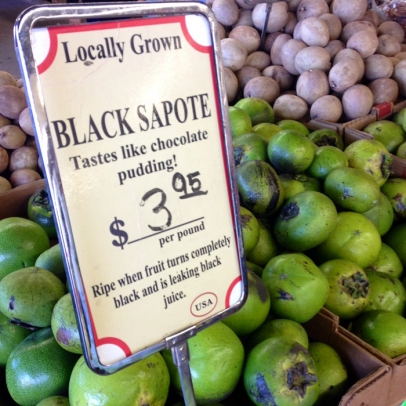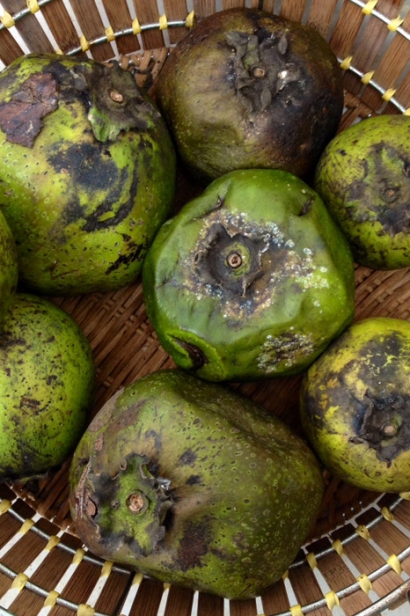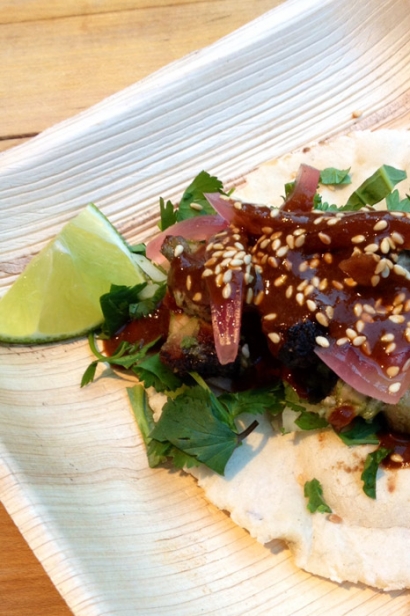Black Sapote: The Chocolate Pudding Fruit
One of South Florida's more intriguing tropical fruits, the black sapote (Diospyros digyna) – also known as the chocolate pudding fruit, chocolate persimmon or sapote negro – is creamy and sweet when ripe, truly resembling dark chocolate custard. Despite its common name, the black sapote is not related to other sapotes like mamey. Instead, it belongs to the persimmon family, Ebenaceae. You can spot the round, tomato-sized shiny green fruits in farmers markets during the winter, but it's not until they're wrinkled, soft and oozing black juice that they're ready to eat.
Does the black sapote really taste like chocolate? Chef Aaron Brooks of Edge, Steak & Bar at the Four Seasons, thinks so. “The first time I tried it, I immediately tasted mellow chocolate and subtle spice notes,” he says. He used black sapote in a sauce for his fire-roasted mojo chicken on grilled flatbread for the recent Dinner for Farmers at Vizcaya Village. “The flavor reminded me of mole, so I thought why not incorporate the fruit in the sauce?” He also used black sapote pulp in a brioche dough: “It made the bread really moist and fluffy.”
You can use black sapote in your favorite banana bread recipe to make a moist quick bread. But you really don't need to do anything much to enjoy this custardy fruit. Scoop it into a bowl and top with a dollop of whipped cream for a satisfying tropical dessert. Blend with lemon, lime or orange juice for added tartness. Mix with milk and ground nutmeg for a smoothie. Combine milk, sapote and cinnamon and freeze in an ice-cream machine. Black sapote is a good source of vitamin C, calcium and phosphorous.
Growing Black Sapote in Your Backyard
Black sapote trees are medium-sized – usually 25 to 30 feet – and grow well in well-drained, sunny locations. Harvest fruits when they change from shiny green to dull green, then wait 3 to 14 days until they soften. Freeze pulp for later use. Find out more about growing black sapote here.







